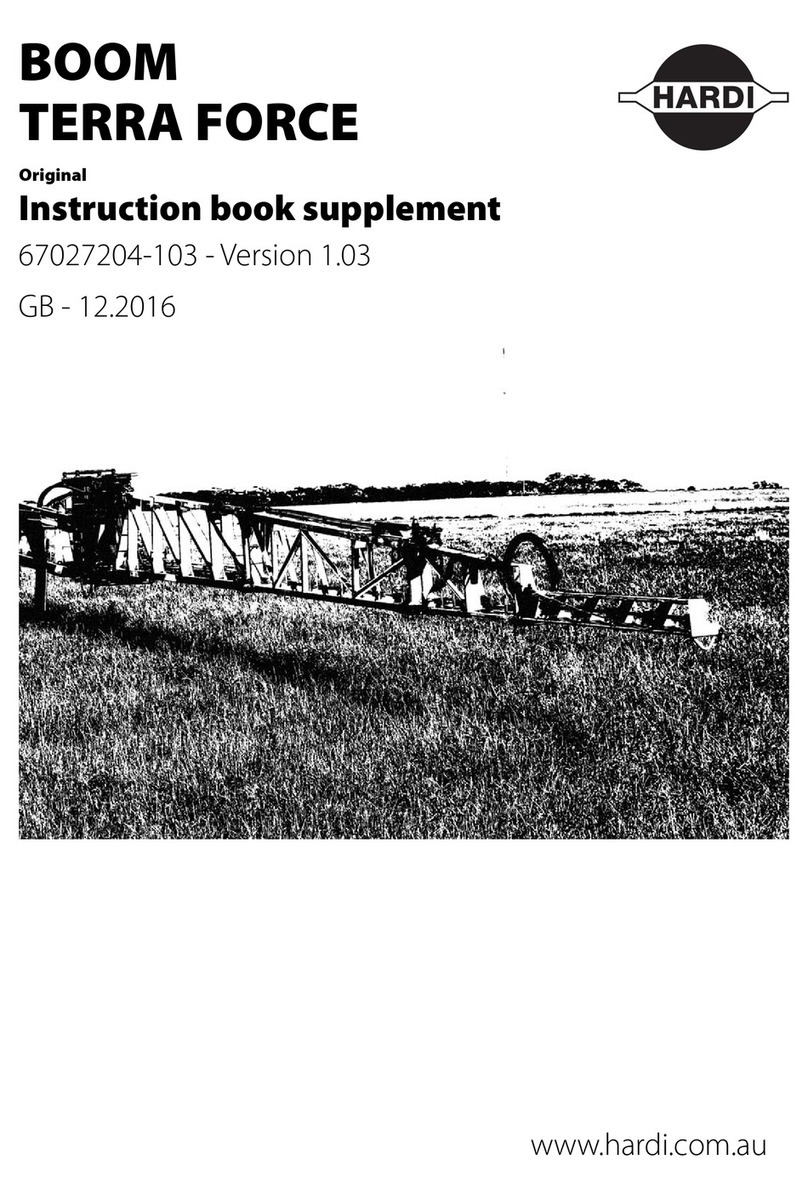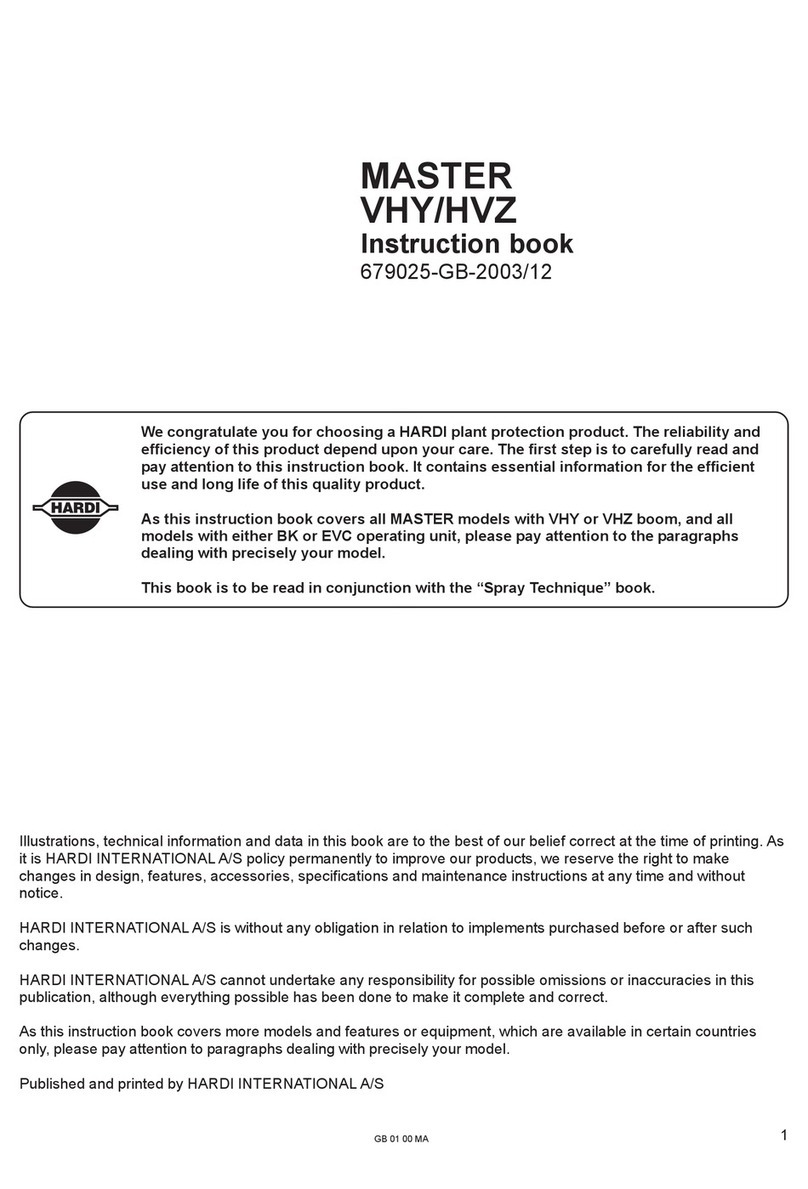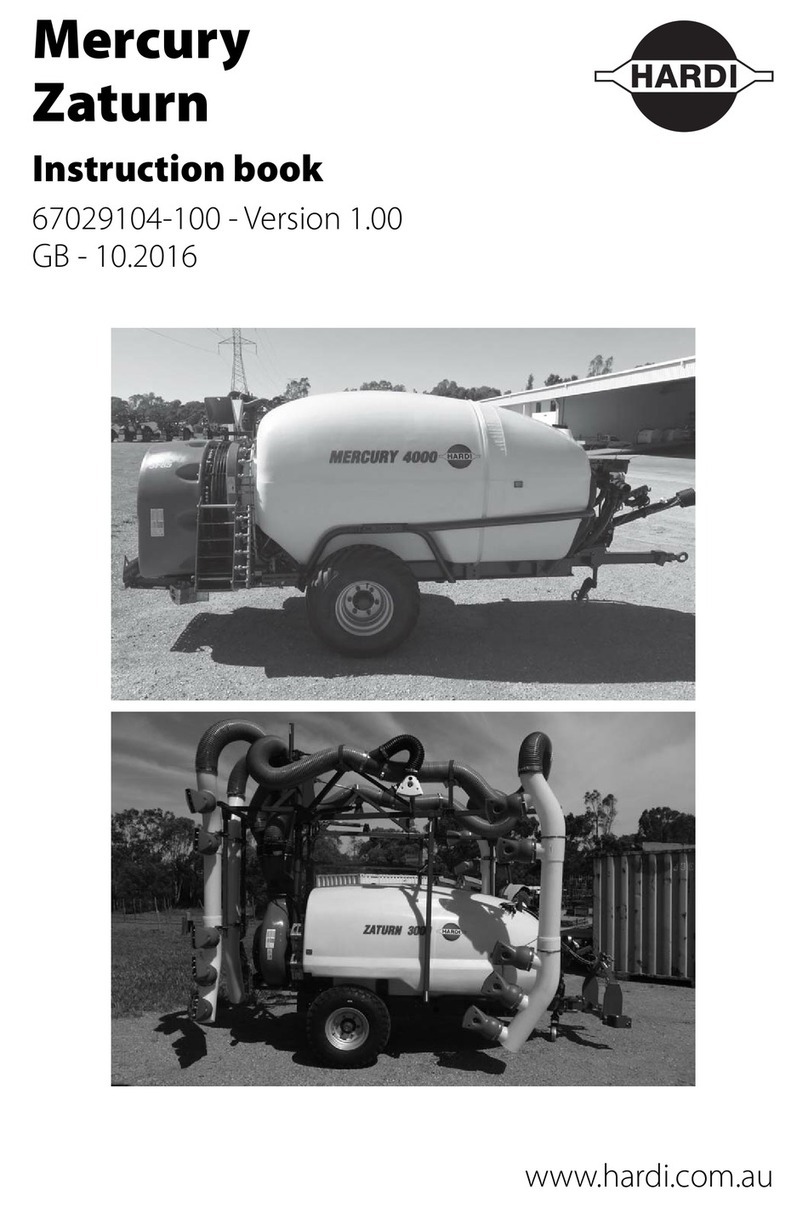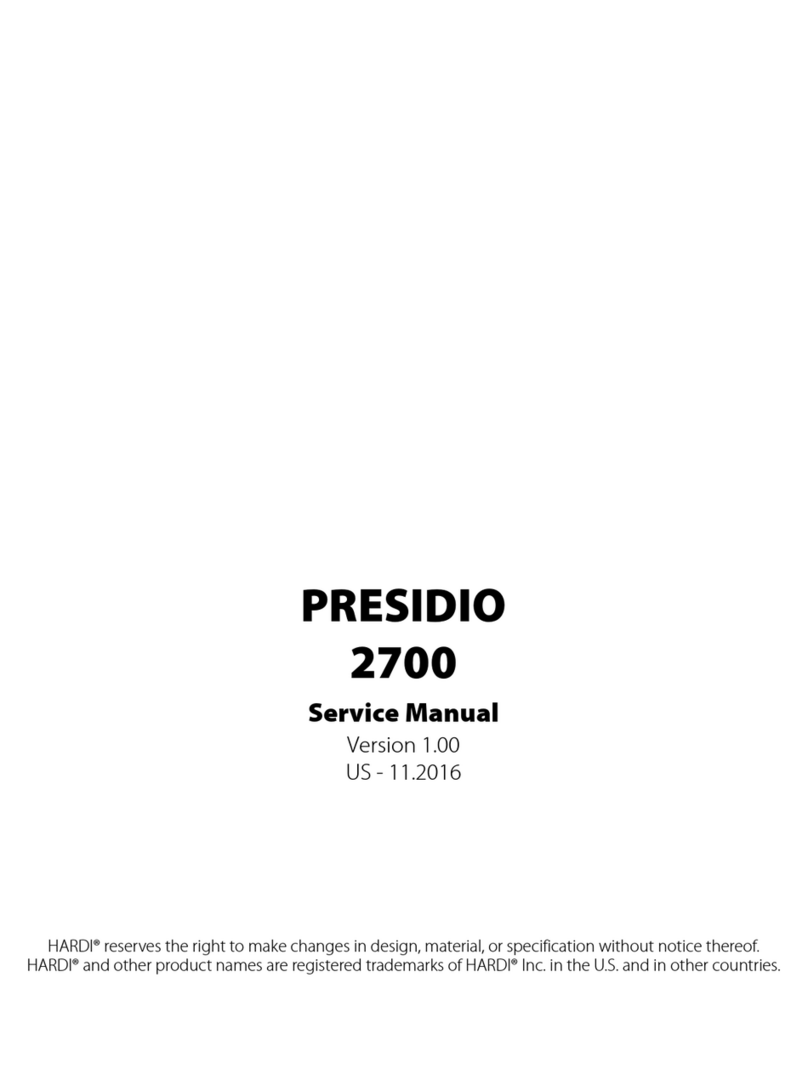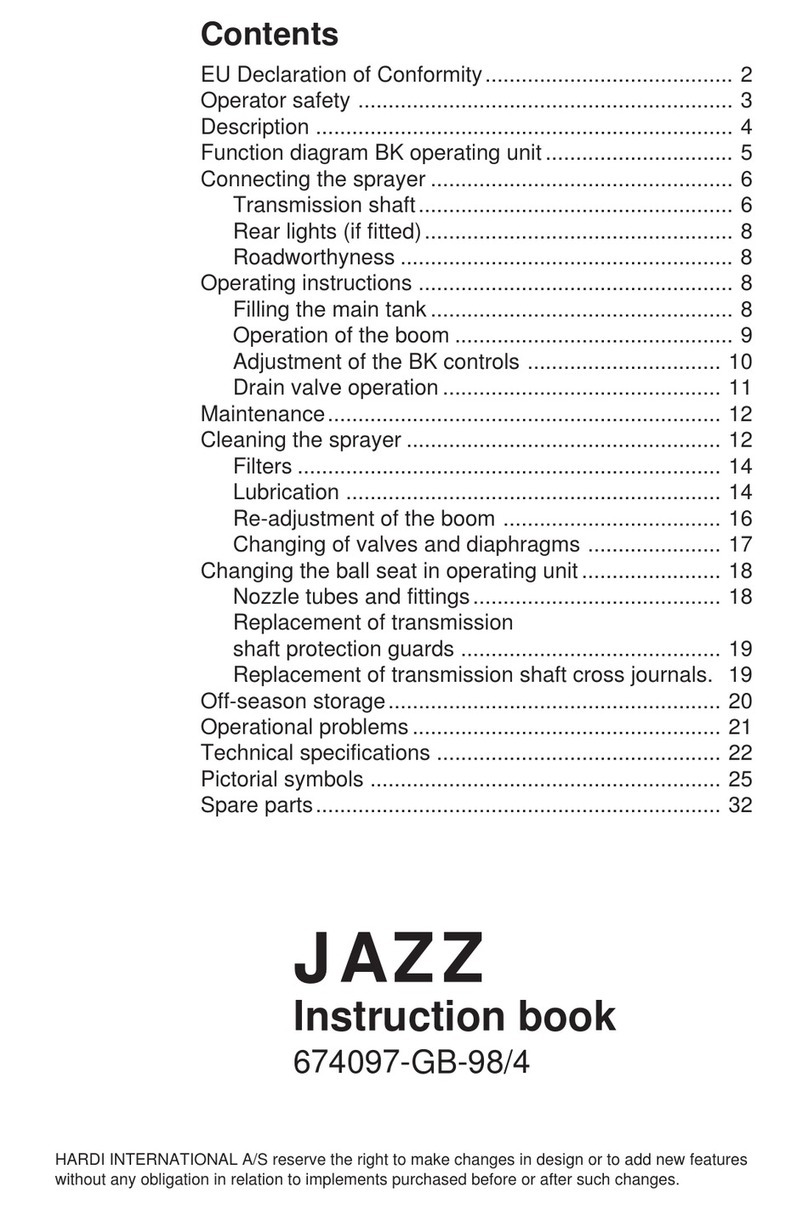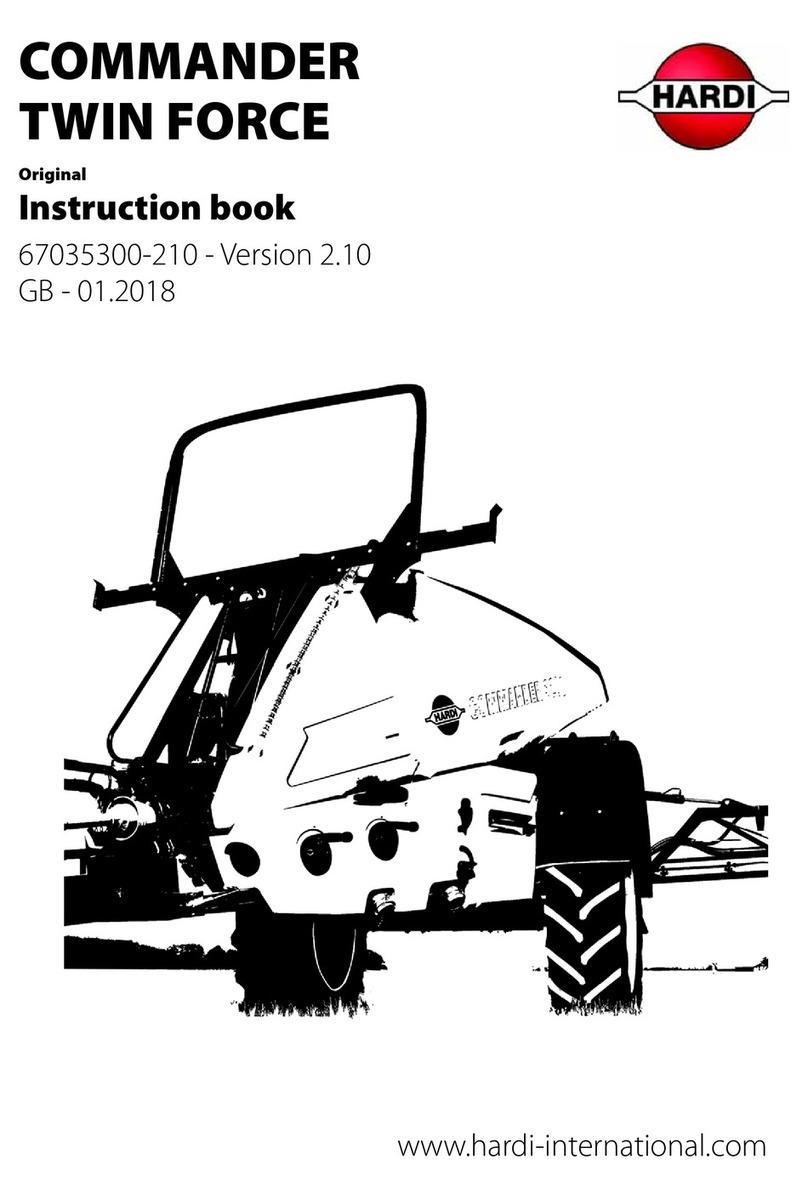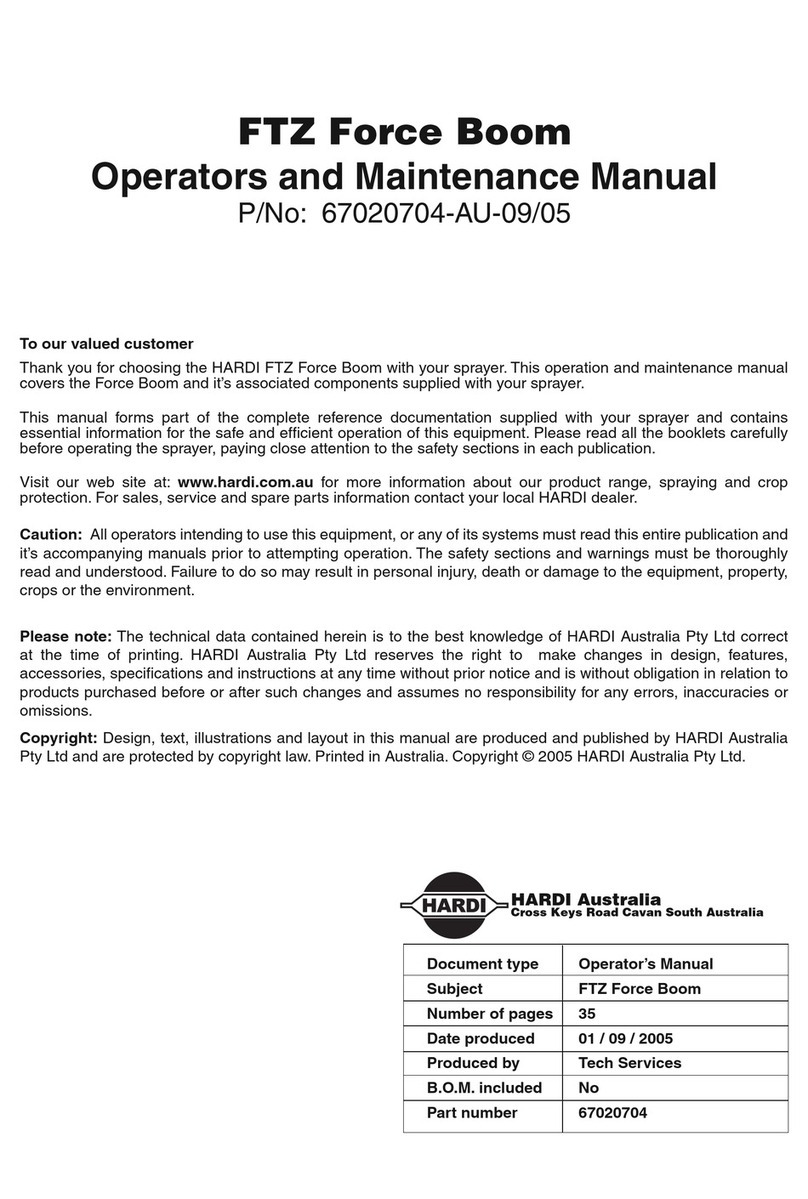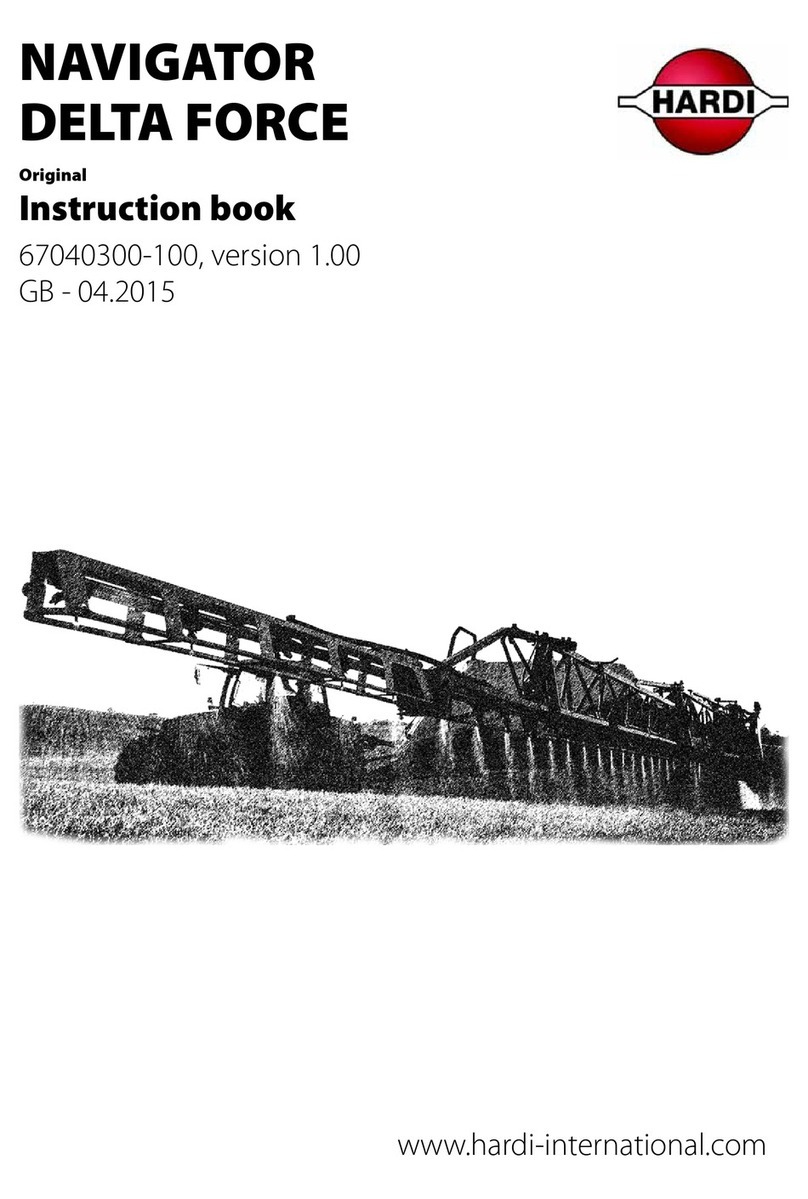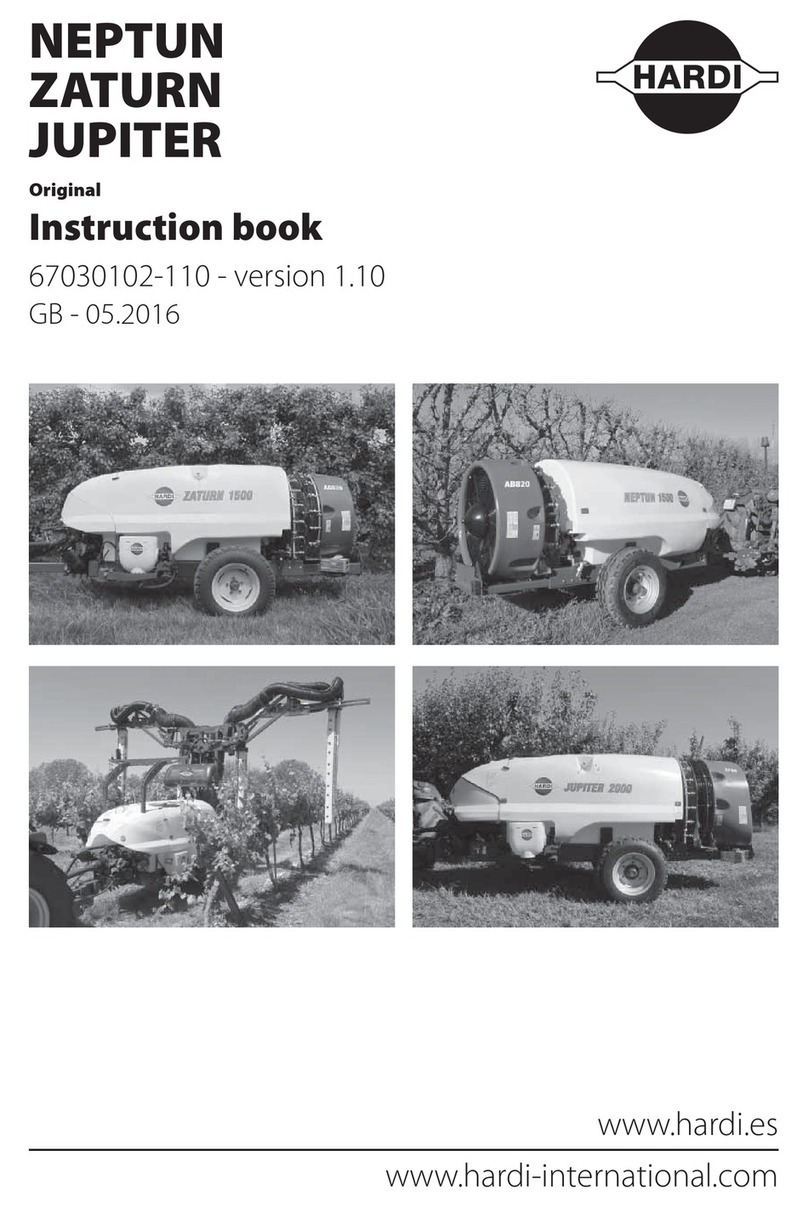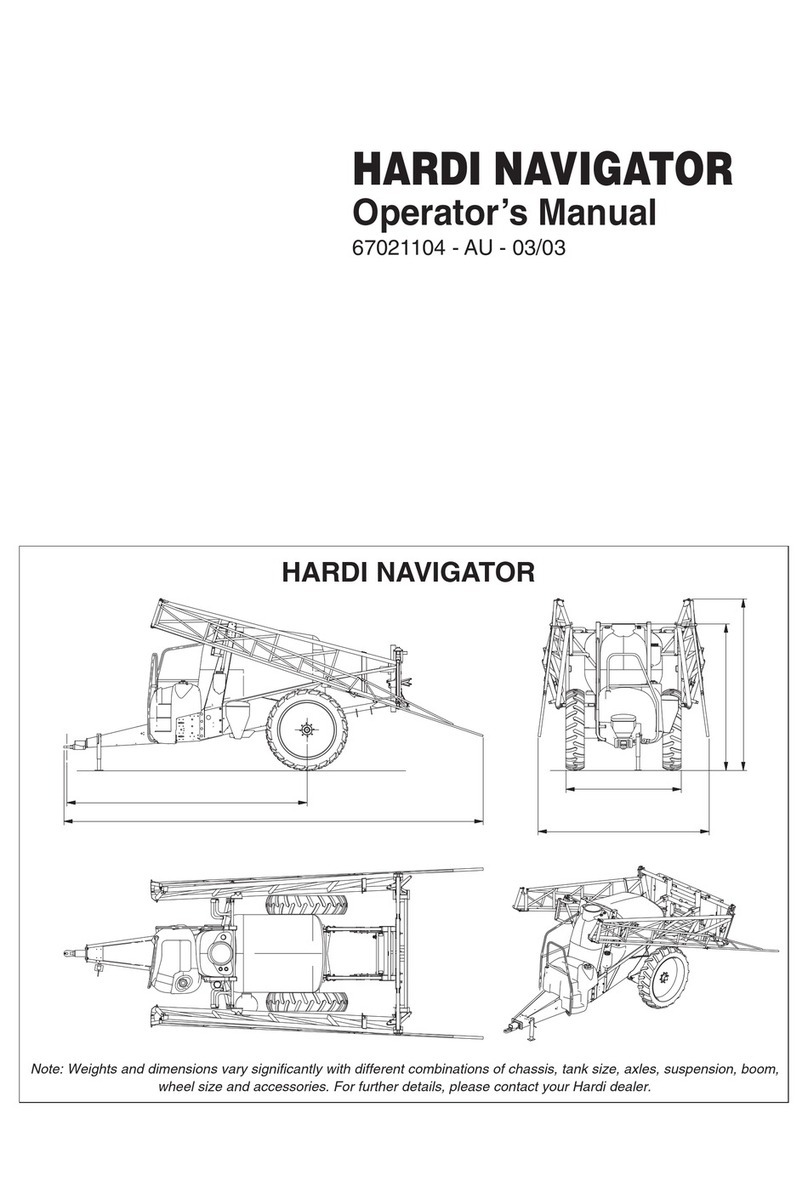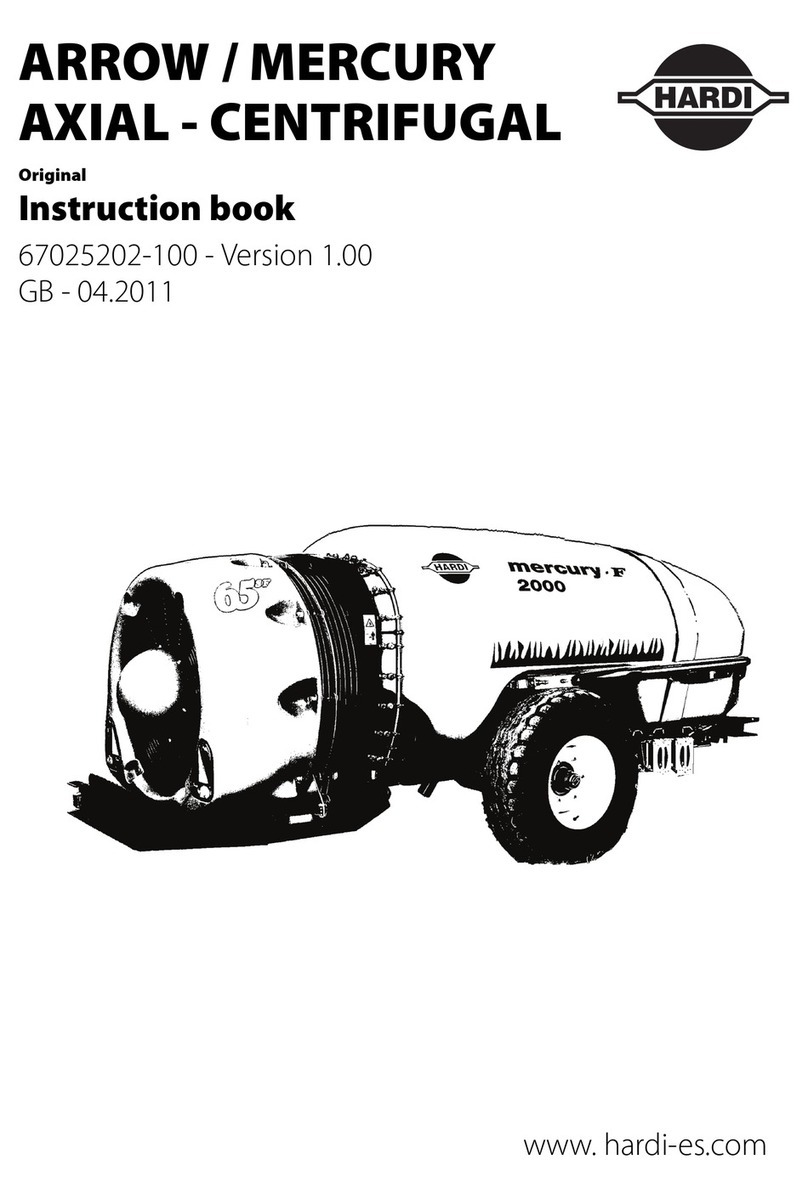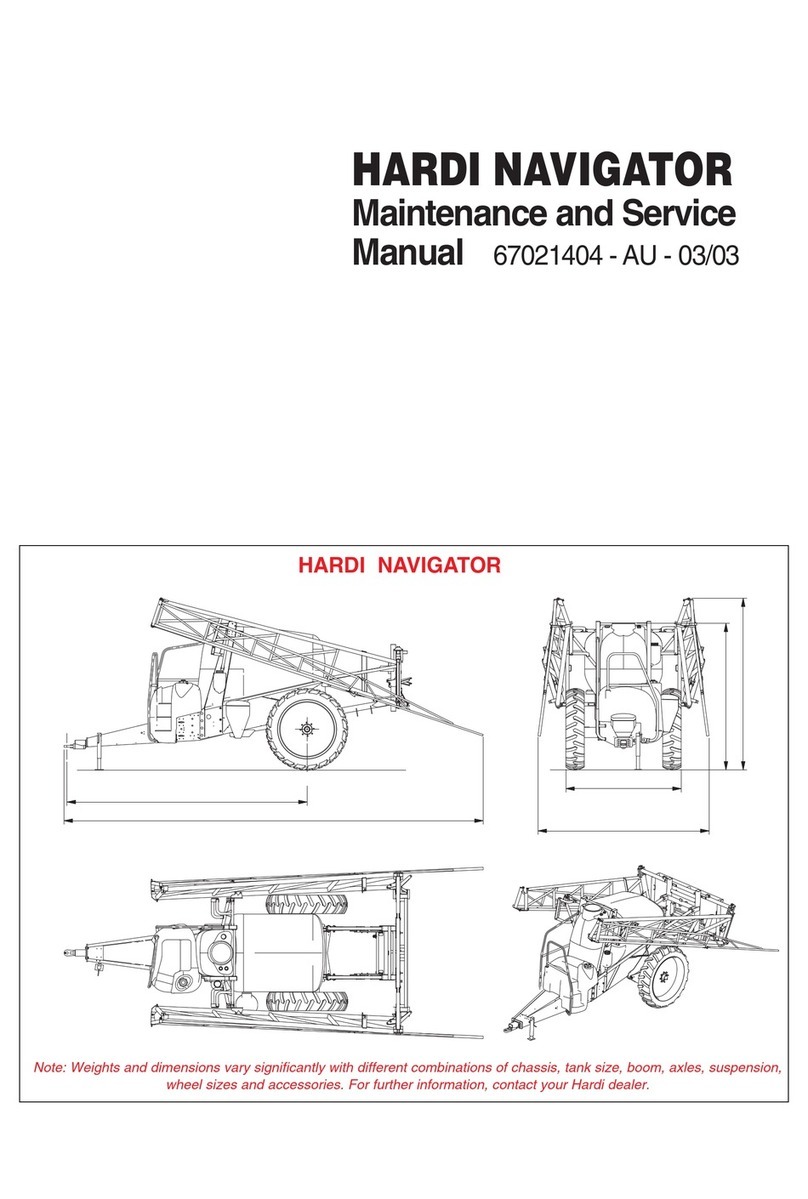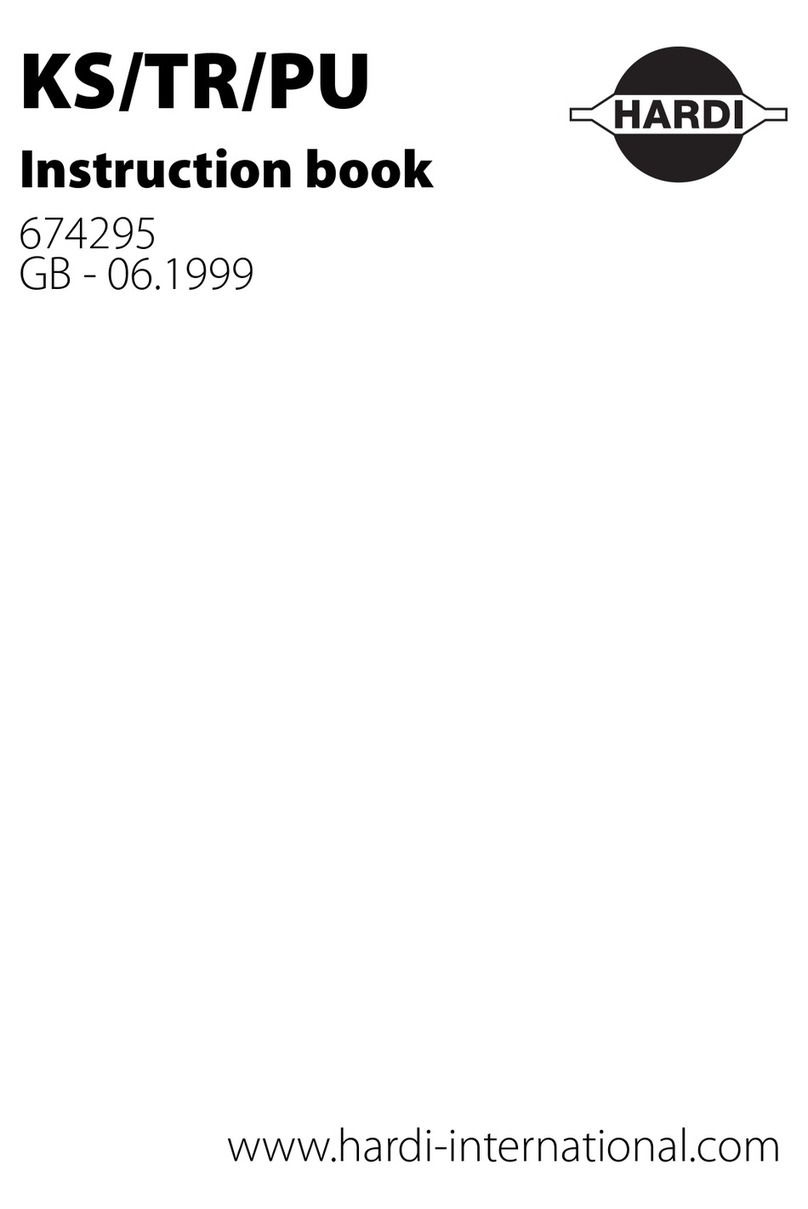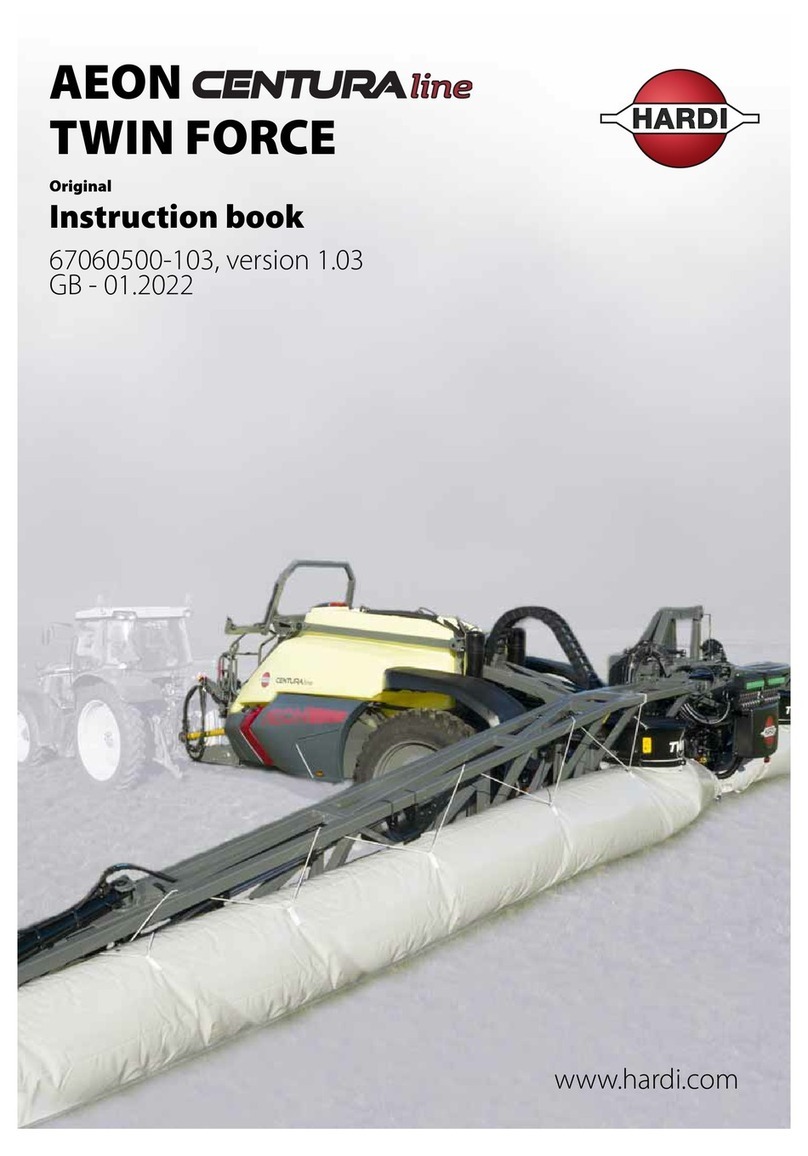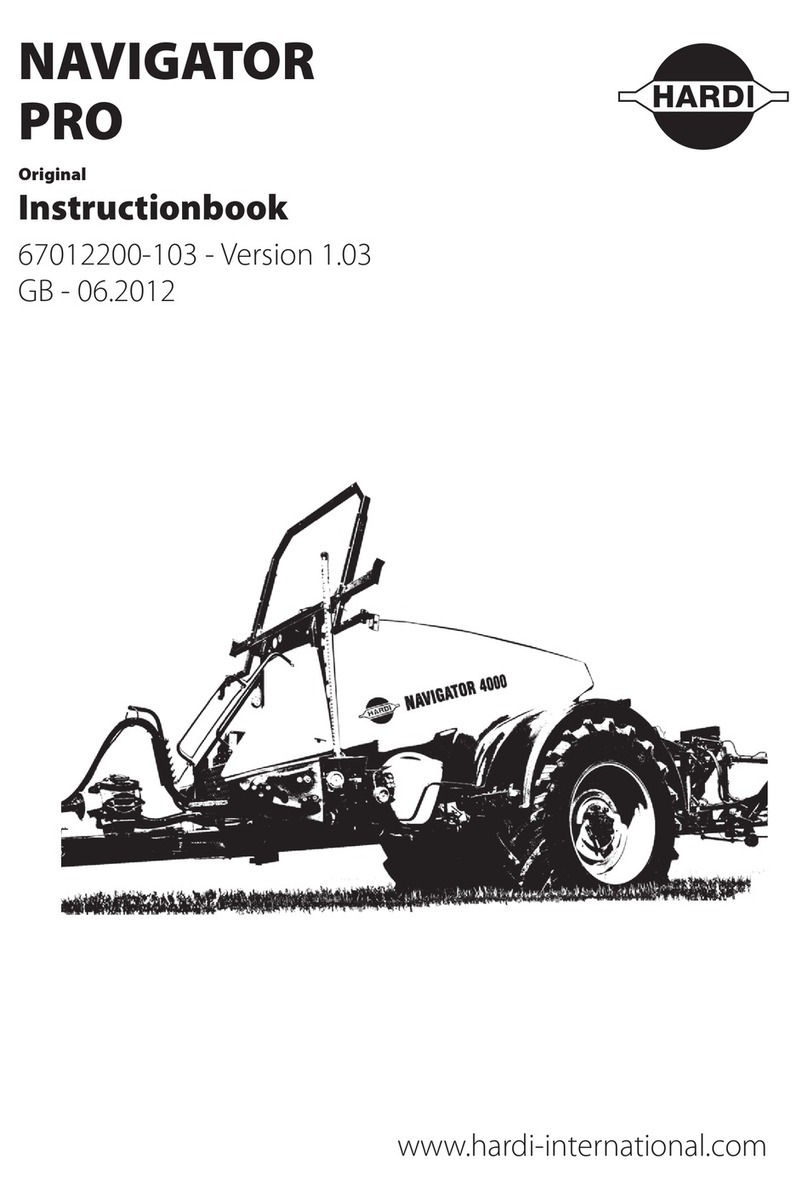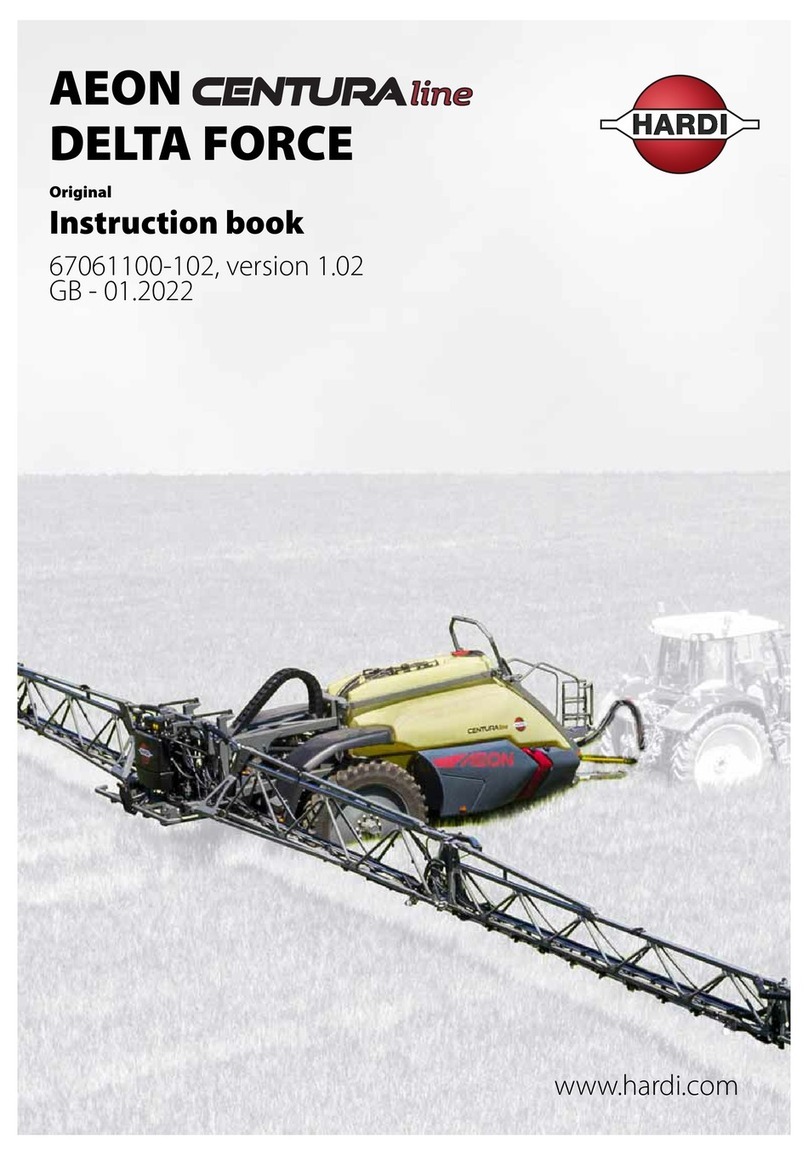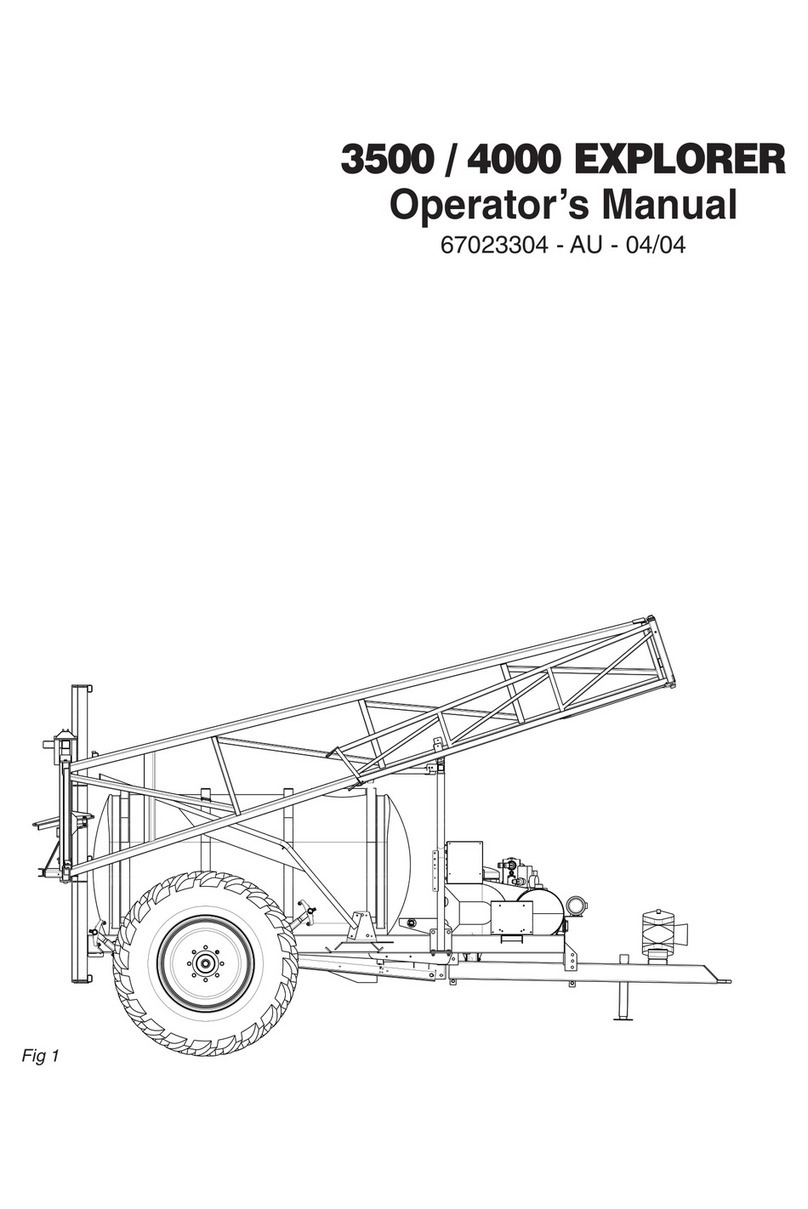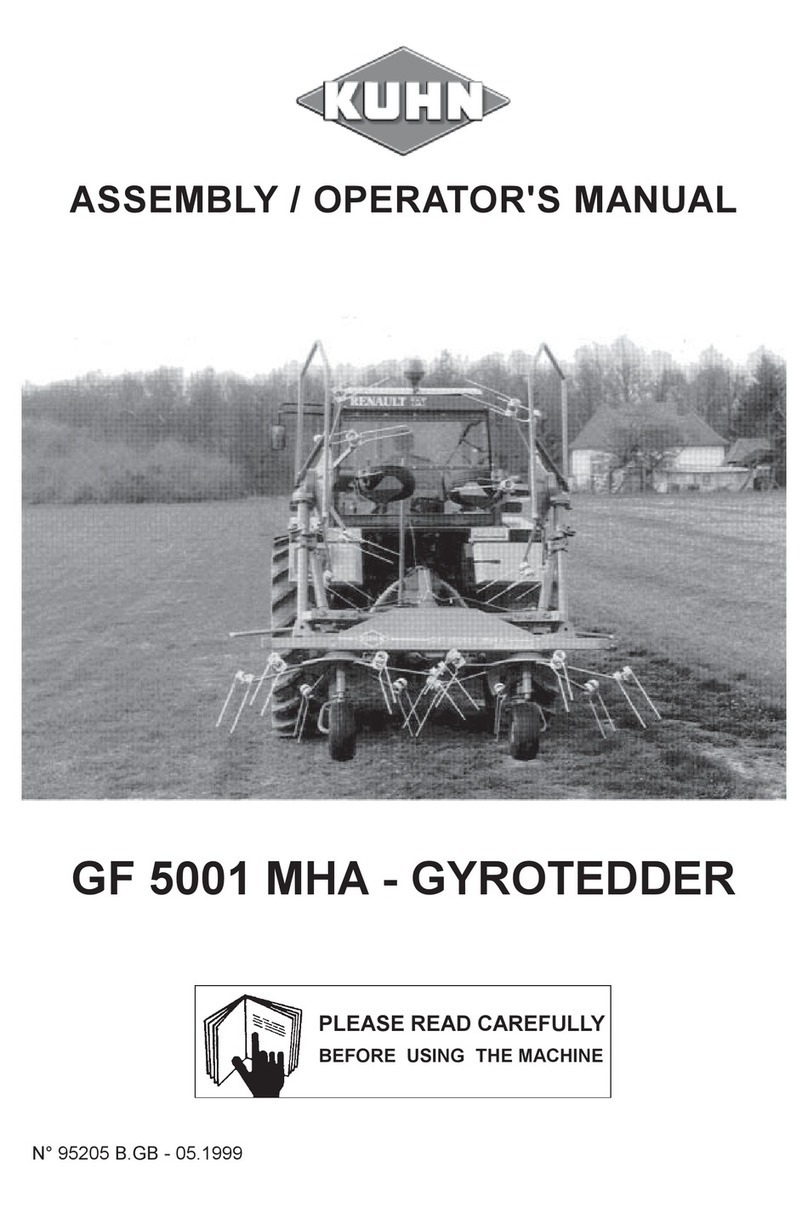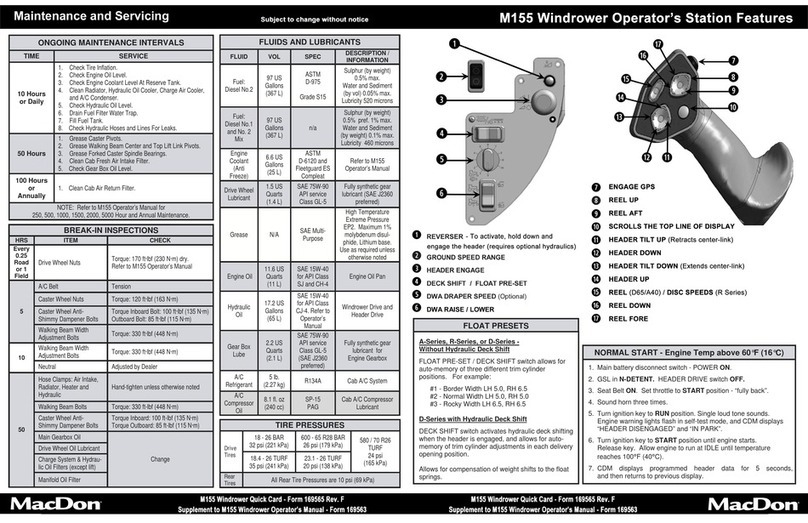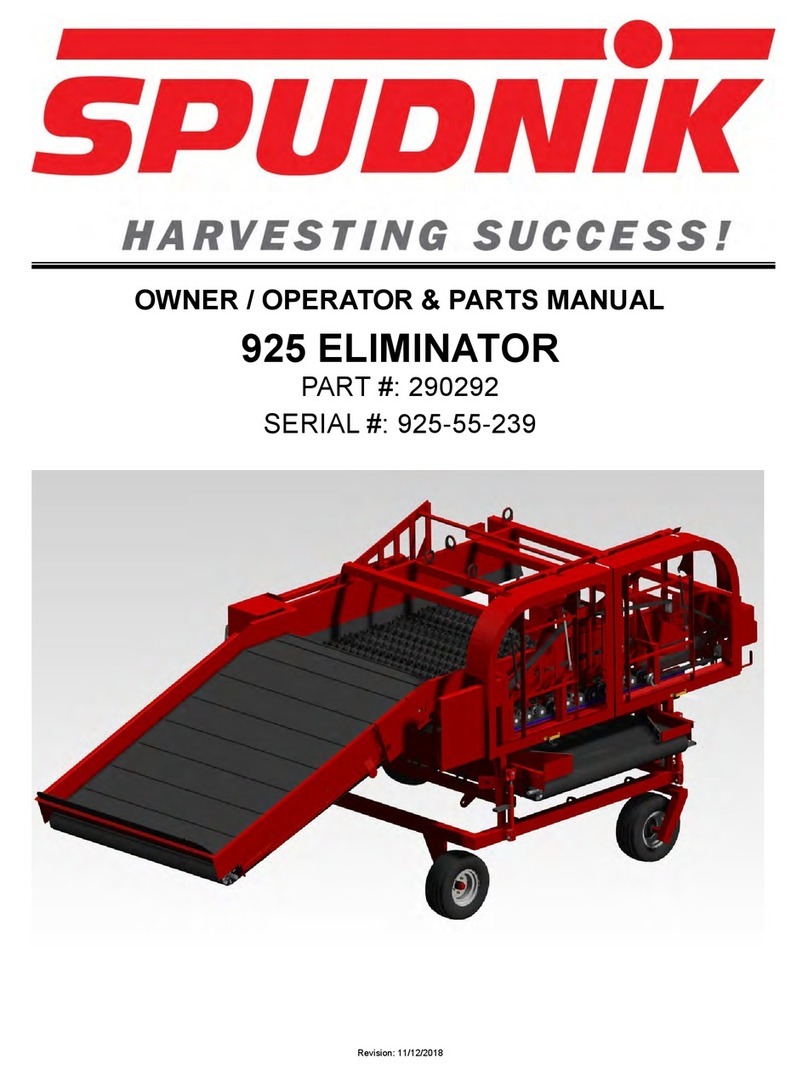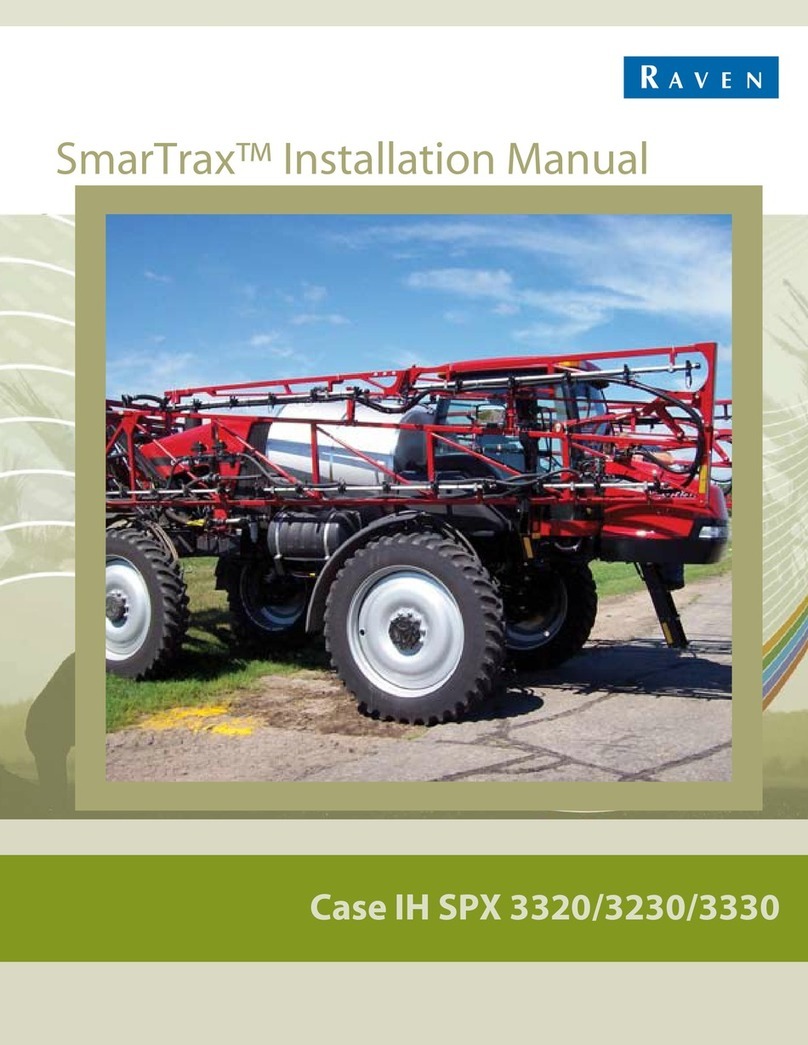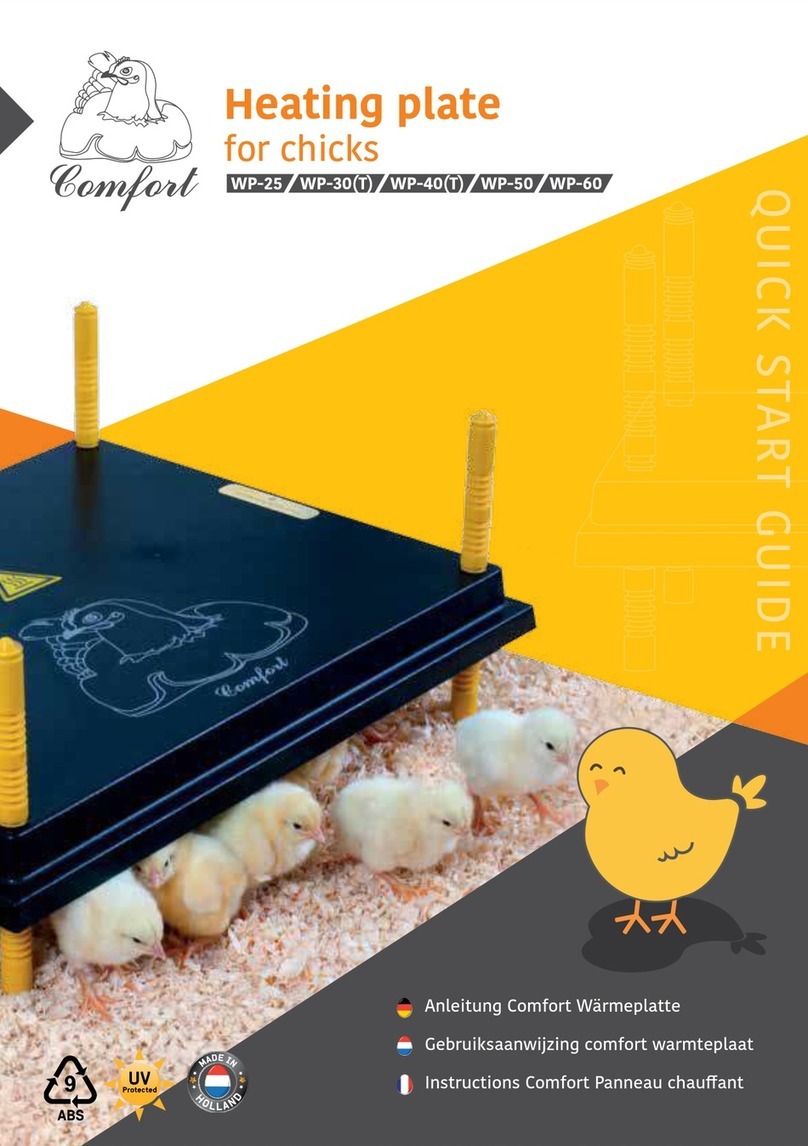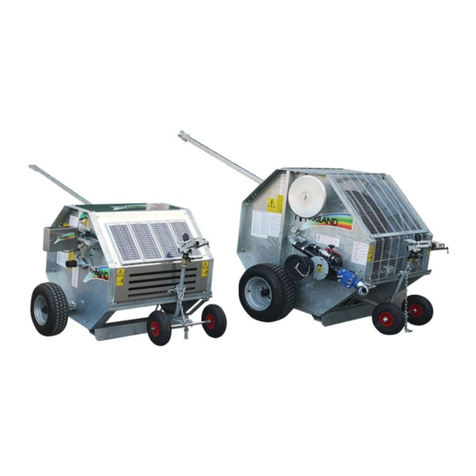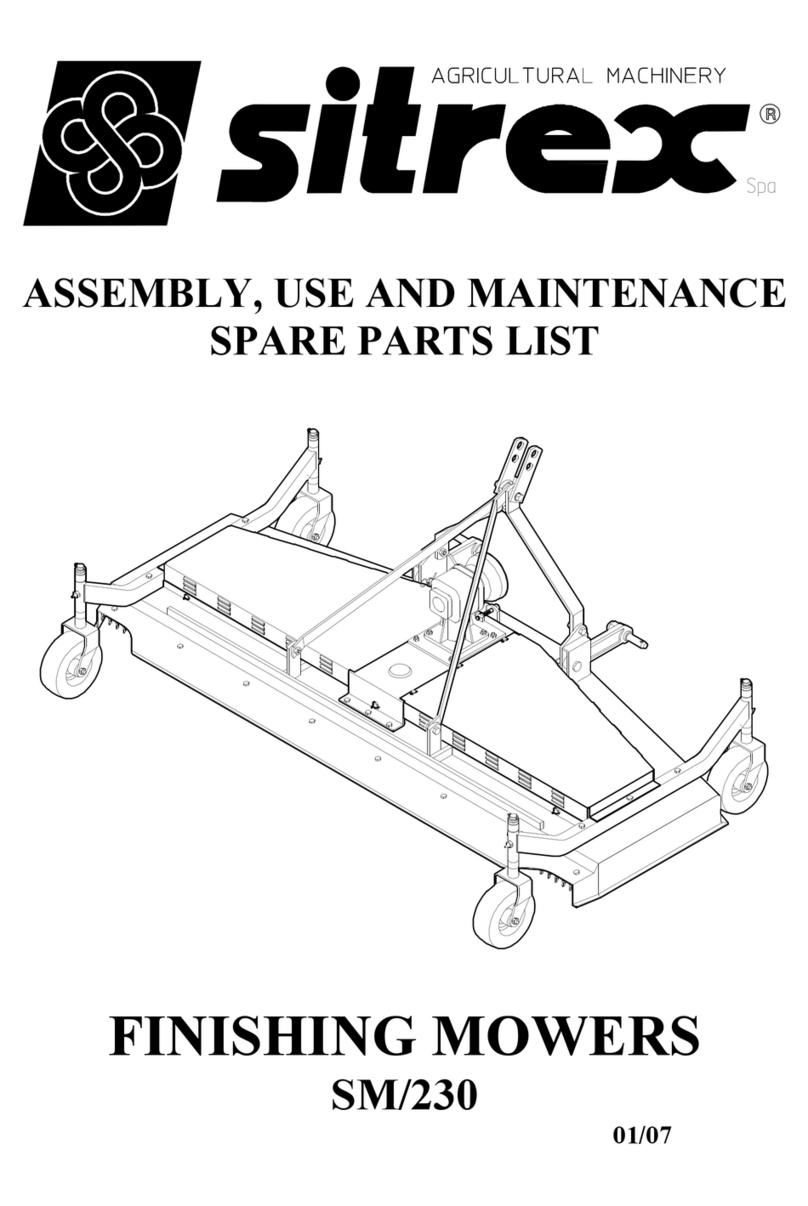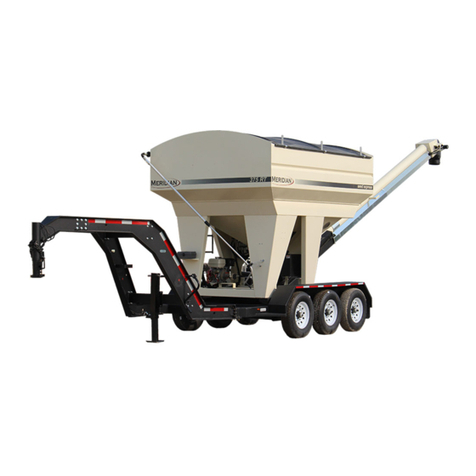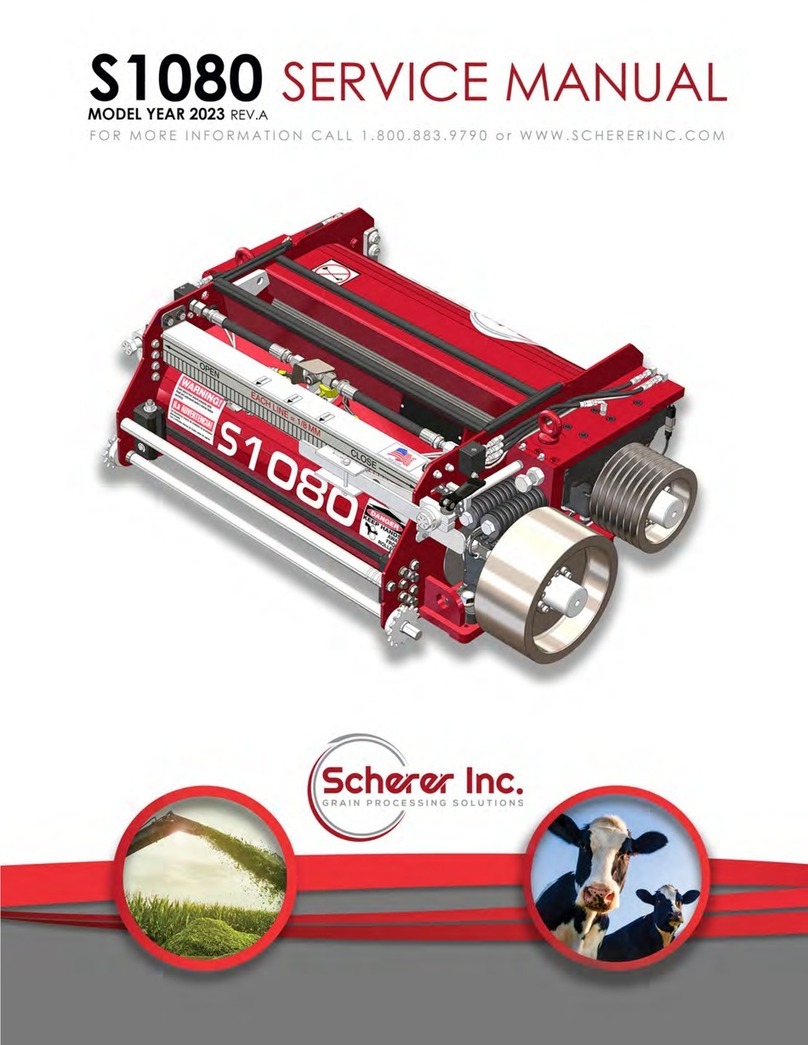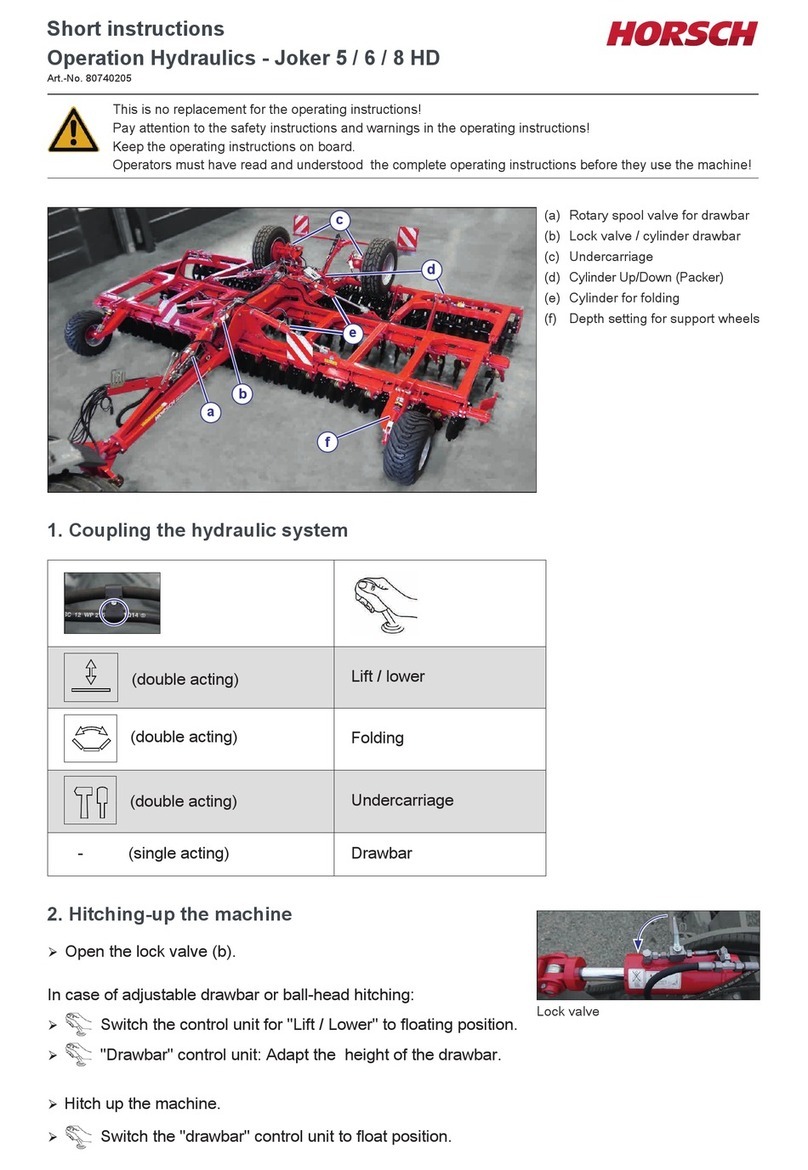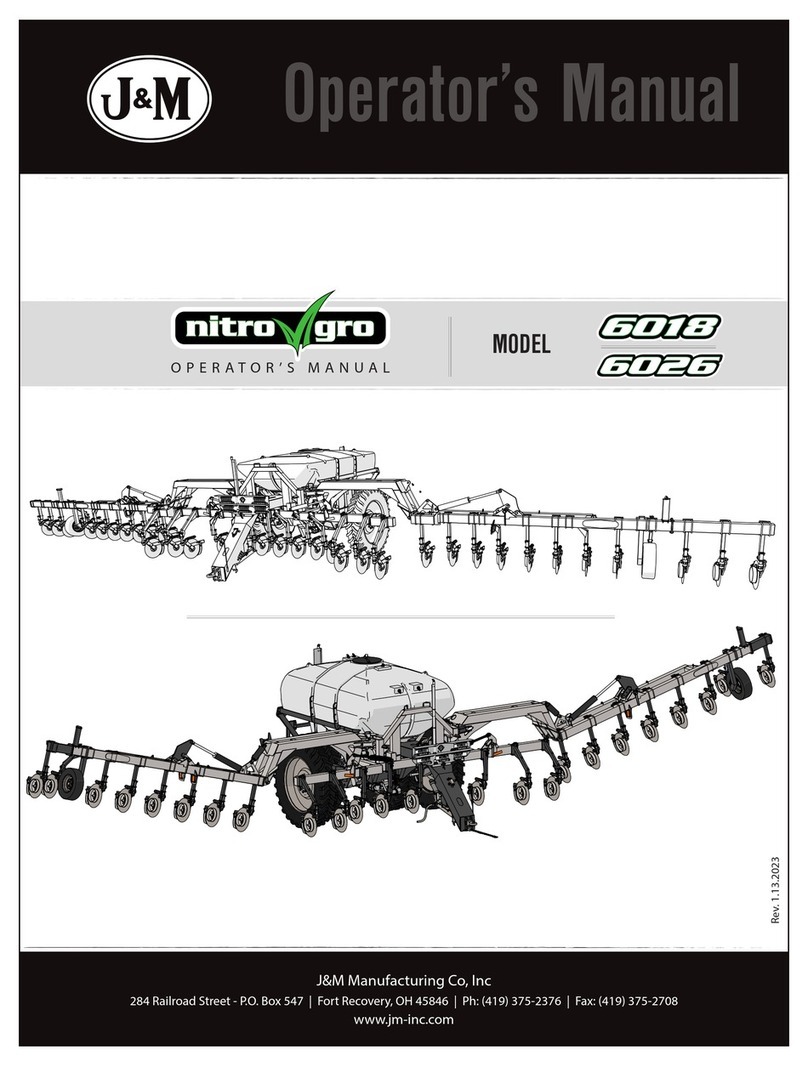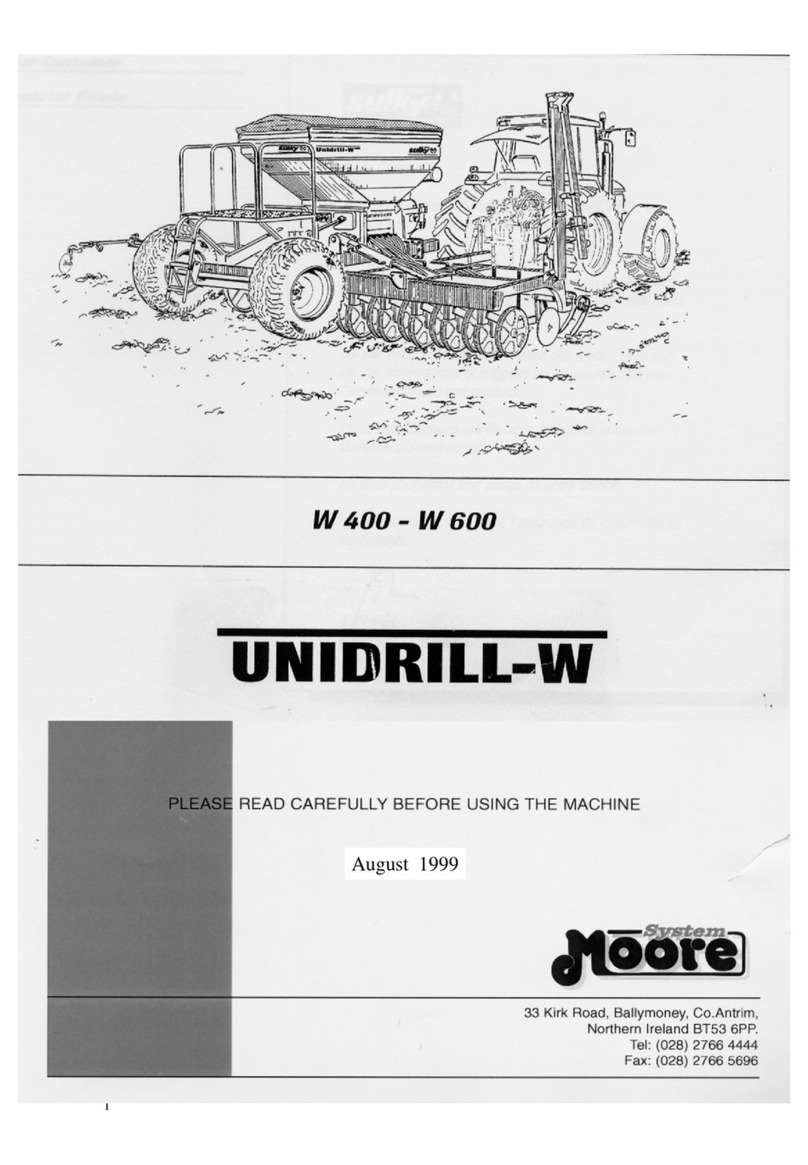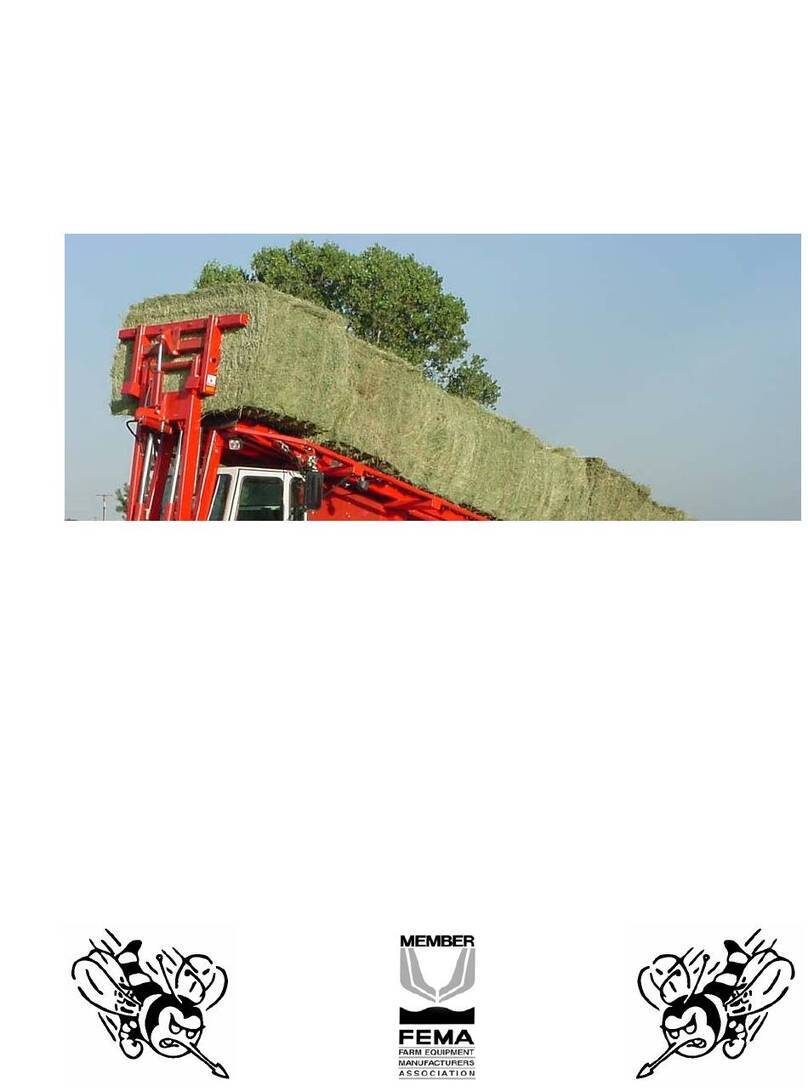
13
Demount
Maintenance
In order to derive full benefit from the sprayer
for many years the following few but important
rules should be kept:
Cleaning the sprayer
Guidelines
Read the whole label of the chemical. Take
note of any particular instructions regarding
recommended protective clothing, deactivating agents,
etc. Read the detergent and deactivating agent labels. If
cleaning procedures are given, follow them closely.
Be familiar with local legislation regarding disposal of
pesticides washings, mandatory decontamination meth-
ods, etc. Contact the appropriate body, eg. Dept of
Agriculture.
Pesticide washings can usually be sprayed out on a
soakaway. This is an area of ground that is not used for
cropping. You must avoid seepage or run-off of resi-
dues into streams, water courses, ditches, wells,
springs, etc. The washings from the cleaning area must
not enter sewers. Drainage must lead to a soakaway.
Cleaning starts with the calibration, as a well calibrated
sprayer will ensure the minimal amount of remaining
spray liquid.
It is good practice to clean the sprayer immediately after
use thereby rendering the sprayer safe and ready for
the next pesticide application. This also prolongs the life
of the components.
It is sometimes necessary to leave spray liquid in the
tank for short periods, eg. overnight, or until the weather
becomes suitable for spraying again. Unauthorized
persons and animals must not have access to the
sprayer under these circumstances.
If the product applied is corrosive, it is recommended to
coat all metal parts of the sprayer before and after use
with a suitable rust inhibitor.
Remember: Clean sprayers are safe sprayers.
Clean sprayers are ready for action.
Clean sprayers can not be damaged by
pesticides and their solvents.
Cleaning
1. Dilute remaining spray liquid in the tank with at least
10 parts water and spray the liquid out in the field
you have just sprayed.
NOTE: It is advisable to increase the forward
speed (double if possible) and reduce the pres-
sure. For S4110 nozzles, pressure may be
reduced to 1.5 bar.
2. Select and use the appropriate protective clothing.
Select detergent suitable for cleaning and suitable
deactivating agents if necessary.
3. Rinse and clean sprayer and tractor externally. Use
detergent if necessary.
4. Remove tank and suction filters and clean. Be care-
ful not to damage the mesh. Replace suction filter
top. Replace filters when the sprayer is completely
clean.
5. With the pump running, rinse the inside of the tank.
Remember the tank roof. Rinse and operate all
components and any equipment that has been in
contact with the chemical.
Before opening the distribution valves and spraying
the liquid out, decide whether this should be done in
the field again or on the soakaway.
6. After spraying the liquid out, stop the pump and fill at
least 1/5 of the tank with clean water. Note that some
chemicals require the tank to be completely filled.
Add appropriate detergent and/or deactivating agent,
eg. Washing soda or Triple ammonia.
NOTE: If a cleaning procedure is given on the
chemical label, follow it closely.
7. Start the pump and operate all controls enabling the
liquid to come in contact with all the components.
Leave the distribution valves until last. Some deter-
gents and deactivating agents work best if left in the
tank for a short period. Check the label.
The Self-Cleaning Filter can be flushed by removing
the bypass hose from the bottom of the filter. Stop
the pump and remove the hose. Start the pump for a
few seconds to flush filter. Be careful not to loose the
restrictor nozzle.
8. Drain the tank and let pump run dry. Rinse inside of
tank, again letting the pump run dry.
9. Stop the pump. If the pesticides used have a ten-
dency to block nozzles and filters, remove and clean
them now. Check also for sediment on the pressure
side of the safety valve for the
Self-Cleaning Filter.
10.Replace all the filters and nozzles and store the
sprayer. If, from previous experiences, it is noted that
the solvents in the pesticide are particularly aggres-
sive, store the sprayer with the tank lid open.
NOTE: If the sprayer is cleaned with a high
pressure cleaner we recommend lubrication of
the entire machine.
Cleaning and maintenance of filters
Clean filters ensure :
•Sprayer components such as valves, diaphragms
and operating unit are not hindered or damaged
during operation.
•Nozzle blockages do not occur whilst spraying.
•Long life of pump. A blocked suction filter will result
in pump cavitation.




















